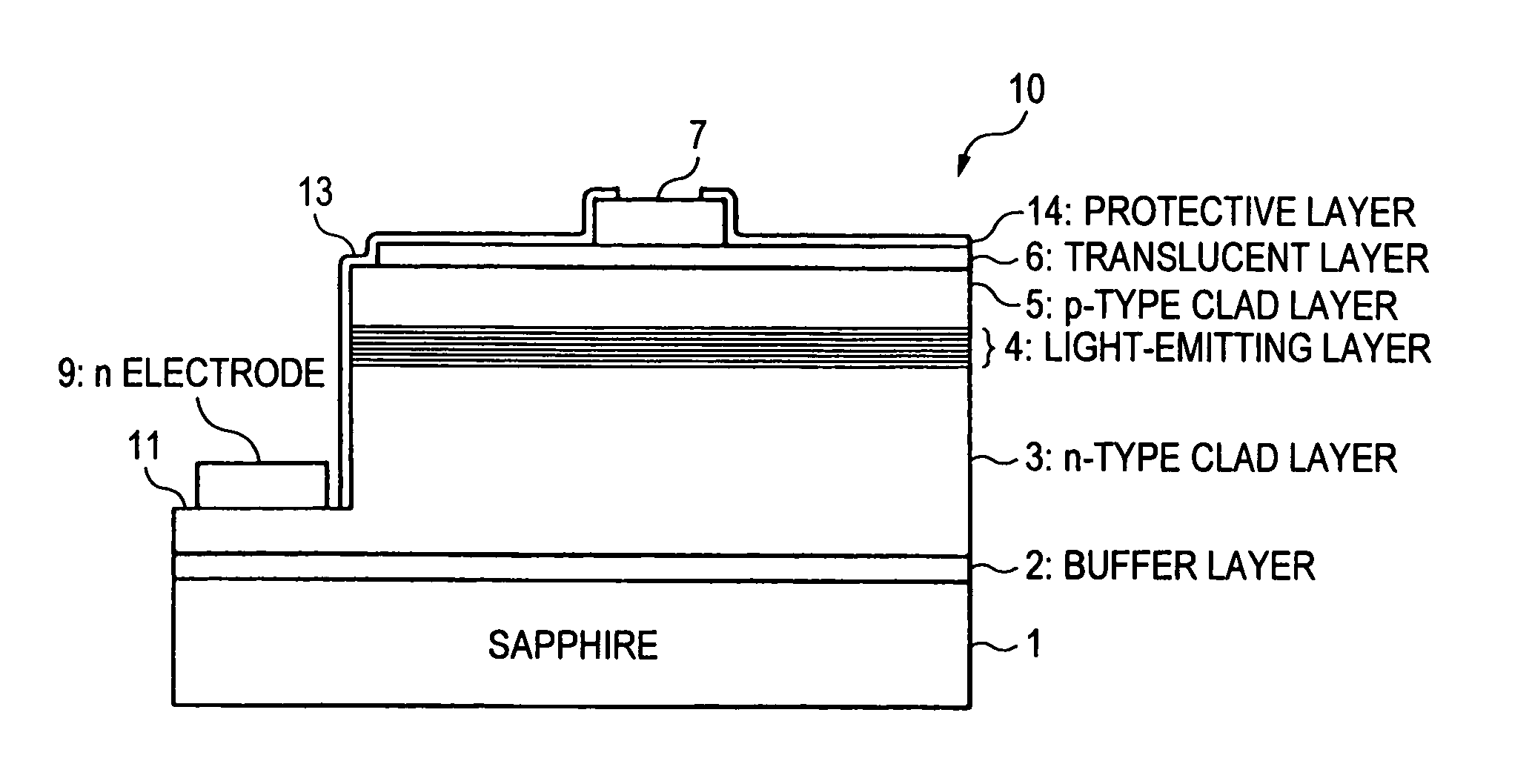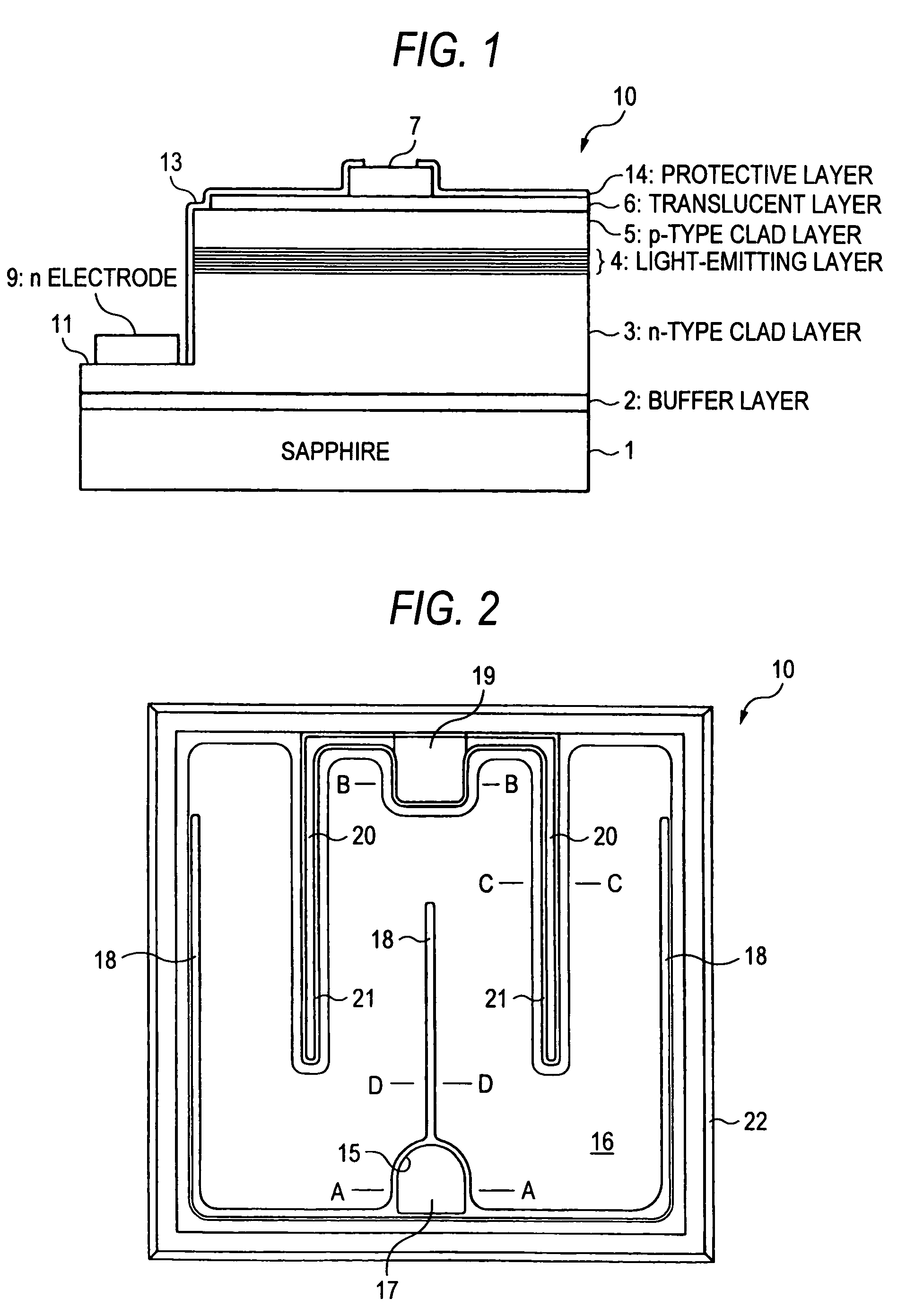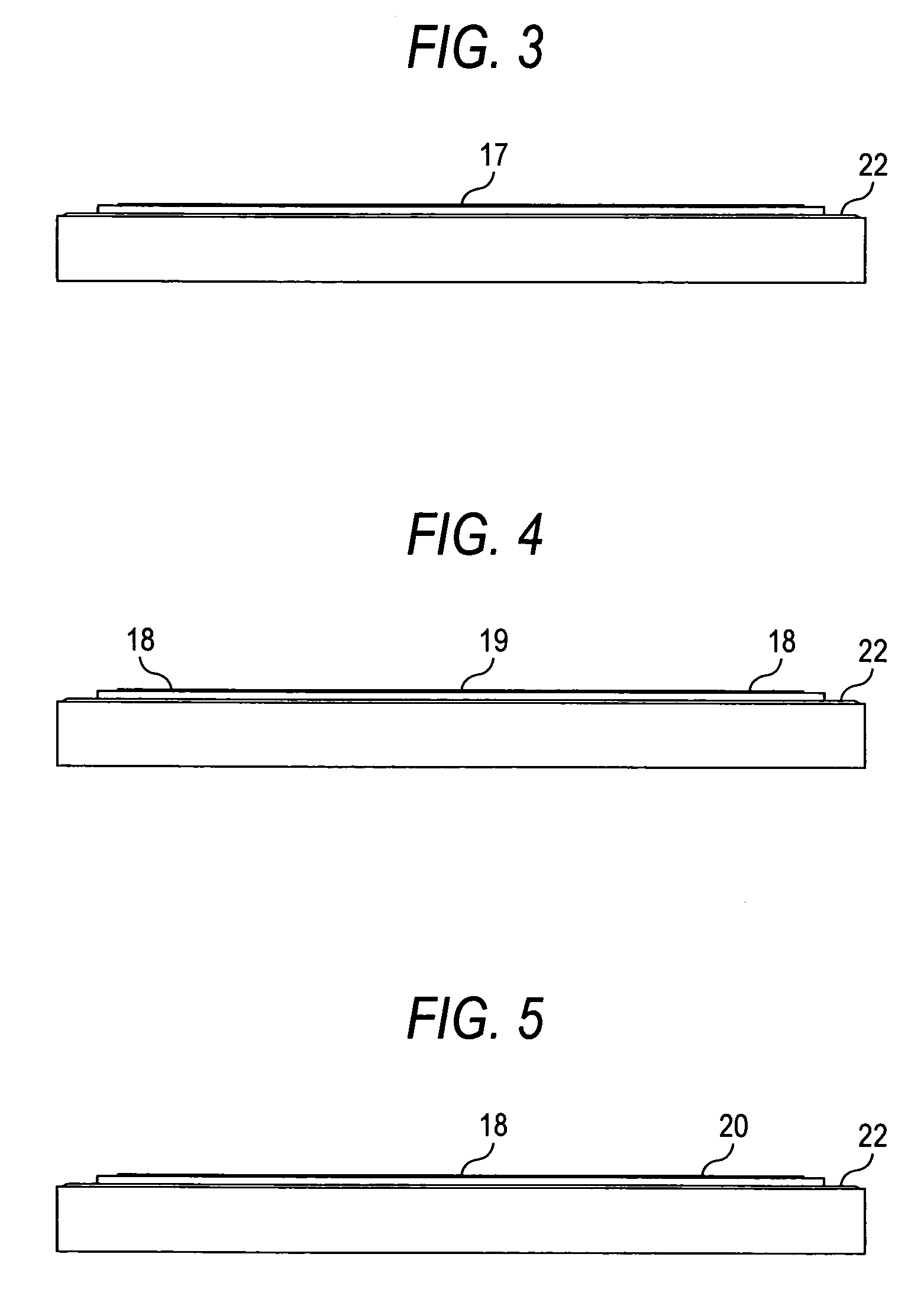Group III nitride compound semiconductor device
- Summary
- Abstract
- Description
- Claims
- Application Information
AI Technical Summary
Benefits of technology
Problems solved by technology
Method used
Image
Examples
Embodiment Construction
[0098]Respective members constituting the invention will be described below in detail taking a Group III nitride compound semiconductor light-emitting device as an example.
[0099]An n electrode is formed on an n contact layer revealed by etching a semiconductor layer. Although any material can be selected as the material of the n electrode if ohmic contact can be obtained between this material and the n-type Group III nitride compound semiconductor, an aluminum alloy such as a vanadium-aluminum alloy is preferably used.
[0100]The shape of the n electrode is also optional. According to an aspect of the invention, a combination of an n seat electrode and an n auxiliary electrode extended from the n seat electrode may be preferably used as the n electrode so that the distance from any point of a p electrode to the n electrode is selected to be in a predetermined range. The n seat electrode may be disposed in substantially the central portion of a side of the device or may be disposed in ...
PUM
 Login to View More
Login to View More Abstract
Description
Claims
Application Information
 Login to View More
Login to View More - R&D
- Intellectual Property
- Life Sciences
- Materials
- Tech Scout
- Unparalleled Data Quality
- Higher Quality Content
- 60% Fewer Hallucinations
Browse by: Latest US Patents, China's latest patents, Technical Efficacy Thesaurus, Application Domain, Technology Topic, Popular Technical Reports.
© 2025 PatSnap. All rights reserved.Legal|Privacy policy|Modern Slavery Act Transparency Statement|Sitemap|About US| Contact US: help@patsnap.com



